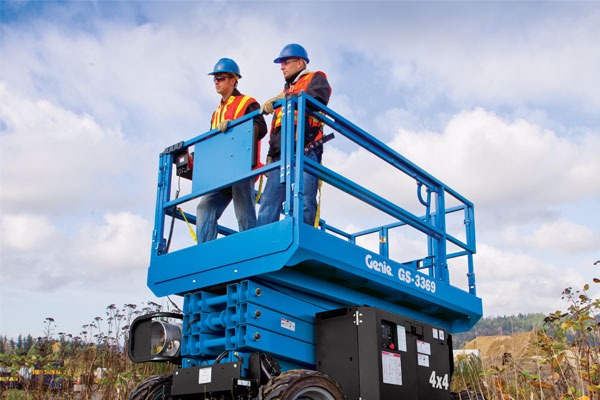
What Is The Recommended Frequency For Aerial Lift Inspection?
Aerial lifts are heavy and large machines designed for sign work, painting services, window-washing, tree work, cherry-picking, and other industrial applications. Like other equipment, aerial lifts need to be inspected at regular intervals to ensure everything is in good order. When it comes to inspecting aerial lifts, owners and employees need to identify potential hazards that may interfere with their operations and lead to accidents. With that in mind, how often should you schedule an aerial lift inspection?
Minimum Requirements of Aerial Lift Inspection
According to ANSI/SIA 92.6-1999, routine aerial lift inspections should be facilitated frequently and annually. What’s considered frequent (at a minimum)? Federal law requires individuals to inspect their aerial lifts every 150 hours or 90 days (3 months), whichever comes first. It is recommended that you place your aerial lift on a planned maintenance schedule based on your application and hours of operation.
There are other ways to determine the frequency of aerial lift inspection, which include:
- You purchased a pre-owned aerial lift (you may skip this if the aerial lift has up-to-date inspections).
- Your aerial lift has been out of service for over three months.
Last but not least, annual inspections should be performed on aerial lifts no later than 13 months from the date of the last inspection.
Aerial Lift Components to Inspect
Inspection requirements are typically determined by the aerial lift manufacturer. Therefore, users should refer to their operator’s manuals for details. If you own a mixed manufacturer fleet, developing a clear outline by unit helps ensure operator safety and compliance. In most cases, aerial lift inspections focus on two areas: lift and vehicle components. Individuals must evaluate vehicle components before using their aerial lifts, e.g., fluid levels, lights, horn, battery, as well as tires and wheels.
After the vehicle components have been inspected, aerial lift workers can then proceed to evaluate the lift’s fuel and air systems, operating controls, and mechanical fasteners. Below is a non-exhaustive list of tasks that should be performed:
- Testing emergency lowering and safety devices.
- Checking the conditions of control markings, warnings, and placards.
- Inspecting structural components and other parts like locking devices, shafts, pins, and fasteners.
- Lubricating moving parts and inspecting filter elements, coolant, engine oil, and hydraulic oil as specified by manufacturer.
- Adjusting lifting mechanisms and looking out for signs of wear or damage.
- Ensuring lower controls include provisions for overriding upper controls.
- Testing aerial lift for limits of motion, smoothness, and speed.
Any aerial lift problems must be addressed before the equipment can be used. In addition, users should only hire qualified professionals to repair their aerial lifts.
Choosing a Time for Aerial Lift Inspection
You need to take note of the height of your industrial building. If it is not tall enough to accommodate the full height of your aerial lift, the inspection may take place outdoors. This means that performing aerial lift inspections during the winter months is not recommended due to unfavorable weather and terrain. Therefore, aerial lift owners should schedule their inspections in early fall, summer, or late spring instead.


Sorry, the comment form is closed at this time.